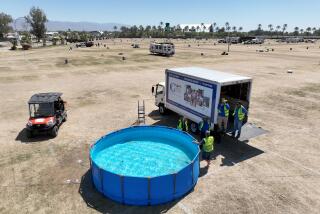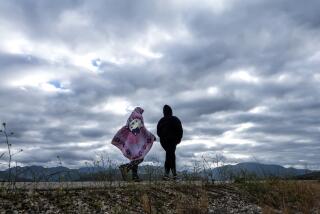L.B. Schools Admit Need for Day-Care Services on Catalina, but Lack Funds
Many people move to Santa Catalina Island because it’s quieter and less crowded than the mainland.
But fewer people often means fewer services, as some Avalon parents have found out.
There is no day-care service on the island, and the only preschool, a part-time operation for 3- and 4-year-olds that limits enrollment to 30, is full.
What is needed, parents say, is all-day child care for all preschoolers and after-school care for about 80 other children.
The Long Beach Unified School District--which runs the public schools on the island--offers such services on the mainland, but not in Avalon.
“Child-care programs have long been established in Long Beach, but Avalon residents do not have access to them,” said Ann Marshall, Avalon’s director of community services and the mother of two children. “Our tax dollars are supporting these programs and we are not benefitting from them.”
Avalon parents have been discussing the matter with district officials for nearly a year, but so far nothing has come of the talks.
Carl Martin, director of Child Development Centers for the Long Beach school district, acknowledges that child-care services are needed in Avalon but said the district does not have the money to provide any.
“Because of our financial constraints, we can not expand our programs,” Martin said in a telephone interview. “In fact, we are fighting to survive.”
According to the state education code: “The (State) Department of Education shall develop and promote a full range of services . . . essential to the creation of a child development program. . . . “
The state has provided grants to private and public agencies, including school districts, to establish day-care programs. But Martin said that since 1978, the state has cut back its allocation, forcing the Long Beach district to subsidize its programs each year with $500,000 from reserve funds.
Last fiscal year, Martin said, the child development programs--which include all-day care, preschools and after-school “latchkey” programs--had a $160,000 deficit. The district spends about $5.5 million on 44 child development programs.
Martin also noted that setting up programs in Avalon is more expensive than in other areas of the district because of the island’s isolation. District employees living and working on the island are given an extra $250 every four weeks and 10 round-trip tickets between the island and Long Beach.
“Avalon certainly deserves such programs, but because of financial constraints we would have to take services away from Long Beach to give to Avalon,” Martin said. “I think the parents should have the city or a private group contract with the state” to obtain day-care services.
But Robert Cervantes, assistant superintendent of the State Department of Education and director of statewide child-development programs, also claimed poverty.
Cervantes said demand for child-care programs continues to grow, but state spending on it has not increased. He said $319 million is spent annually on child-development programs at 2,300 locations statewide. He said 60% of the 111,000 children being served are cared for through programs administered by public school districts.
Most programs are directed at the “working poor,” Cervantes said, with fees based on a sliding scale. It costs the state $18.60 per child per day in a child-development program, he said.
“Not having any money to expand our programs is a problem,” he said. “But the problem is becoming exacerbated because there has not been an adjustment for an increase in the cost of living. “Hardly a day goes by that we don’t have a request for money for child development. But we do not have a nickel left.”
However, Cervantes said the state might be able to contribute some money for an after-school program for Avalon, but child care for preschool and younger children would have to be self-supporting.
Marshall, the Avalon community services director, said she would explore obtaining state aid. She said a partly subsidized child-care program might be feasible with fees based on ability to pay.
“As long as we had some state assistance, and the costs for parents at the top of the scale was not too much, we might be able to do it,” Marshall said. “But I don’t think the brunt of all this should fall on us or the city. The state has an obligation to provide these services.”
Alleviate Other Problems
Marshall said that having a day-care center could also help alleviate two other problems in the city: housing and labor shortages.
Marian Post, executive director of the Catalina Island Chamber of Commerce and Visitor’s Bureau, said many of the city’s employers--primarily hotels and restaurants--have trouble finding employees because there are few places to live.
Post said a day-care center could allow some parents to work, eliminating the need to house potential workers from the mainland.
“I have that problem in my own office,” Post said. “There is a woman who would like to work full time, but can’t because she doesn’t have anyone to watch her kids.”
More to Read
Start your day right
Sign up for Essential California for news, features and recommendations from the L.A. Times and beyond in your inbox six days a week.
You may occasionally receive promotional content from the Los Angeles Times.






